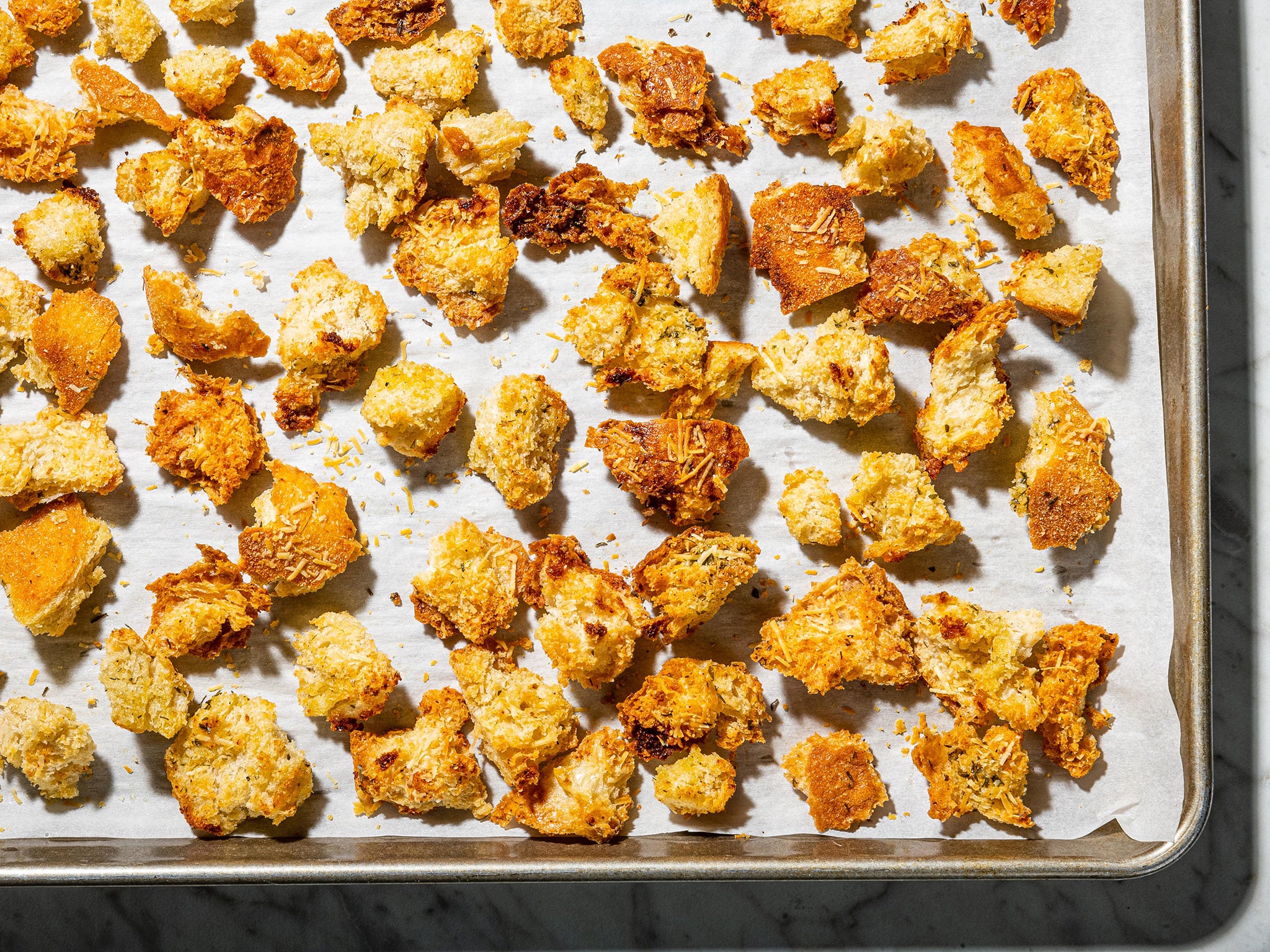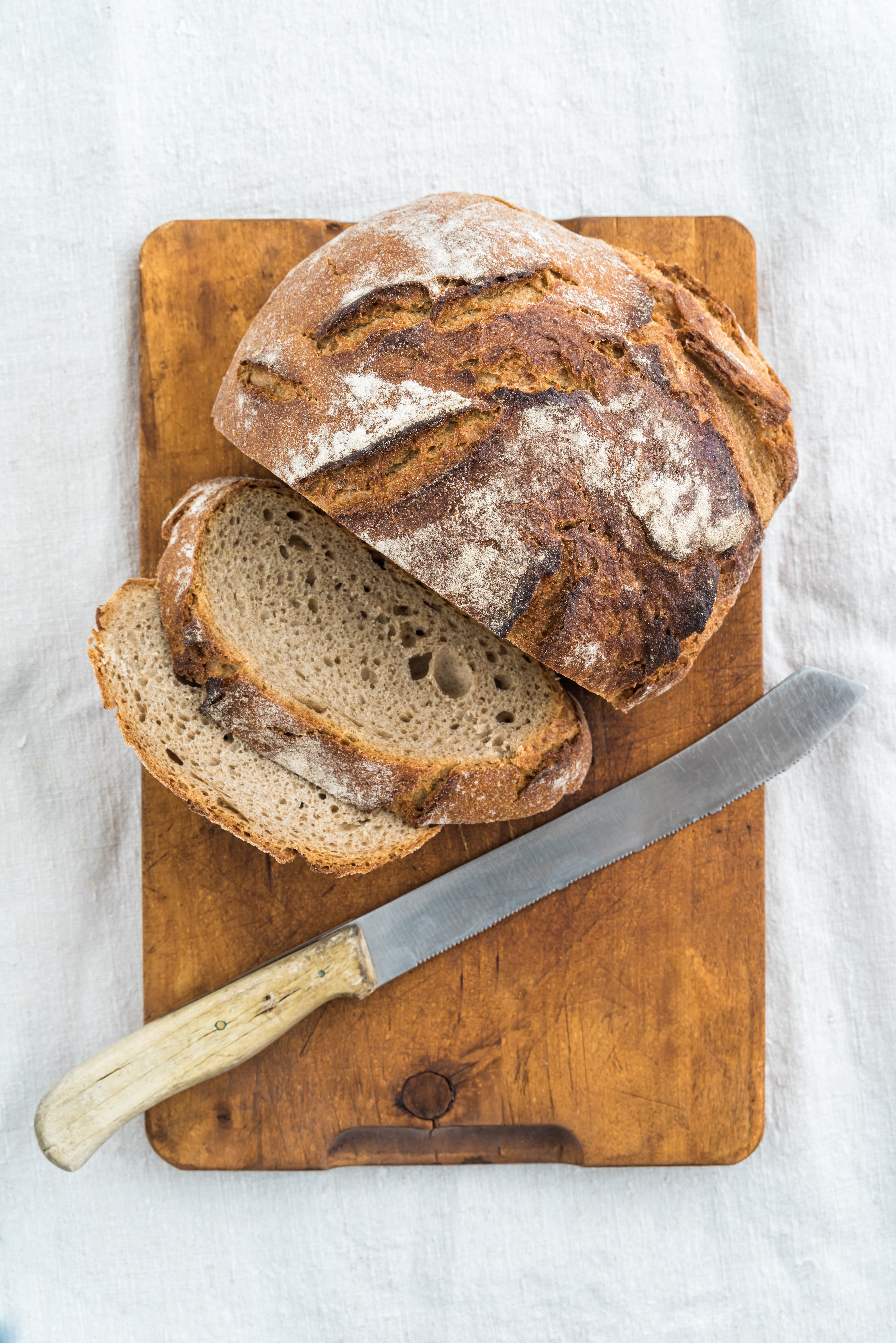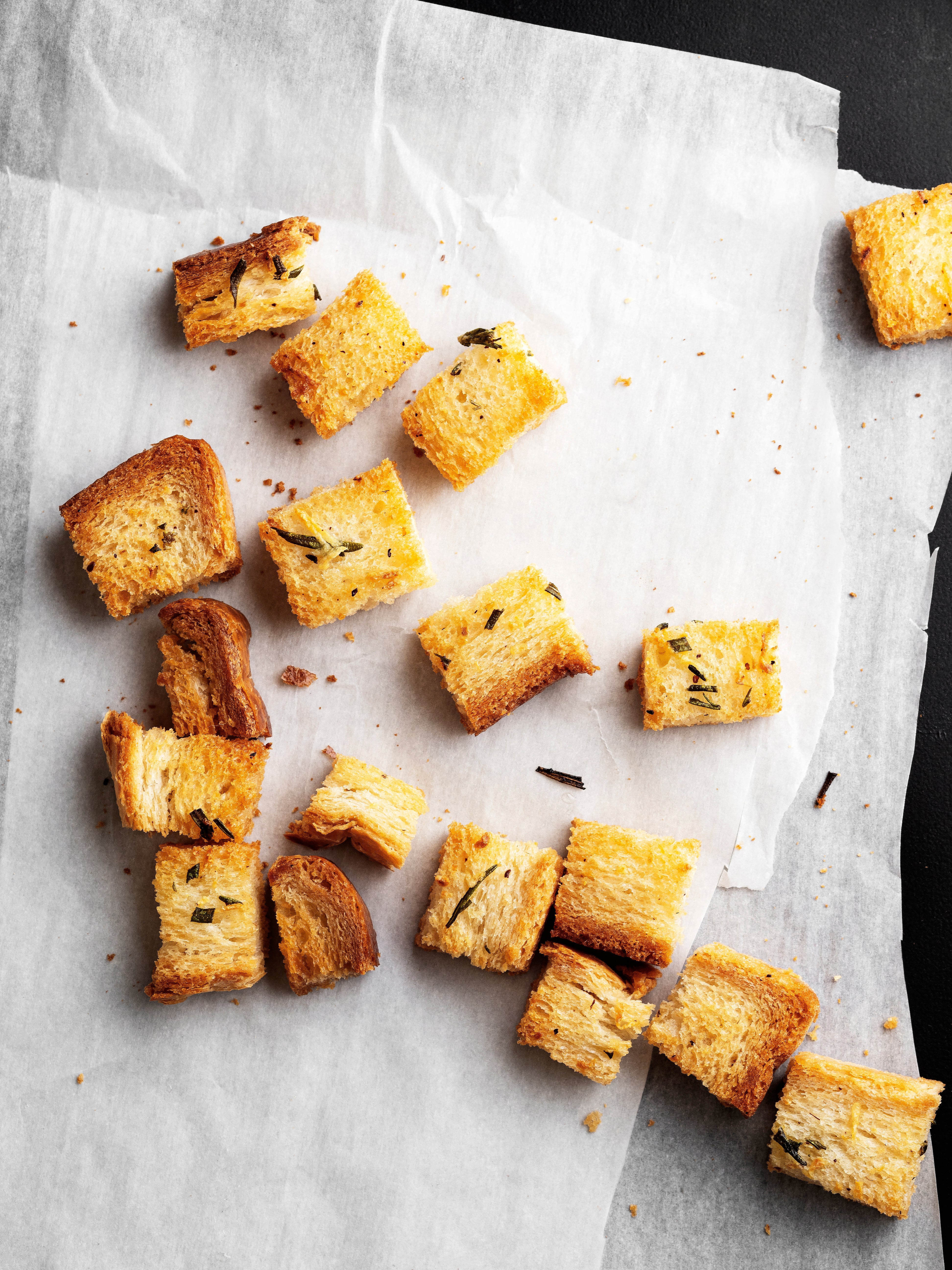Croutons are the best part of a salad – here’s how to nail them
Whether you want to make the best croutons for snacking, salads or soups, here are some things to keep in mind. By Becky Krystal

Your support helps us to tell the story
From reproductive rights to climate change to Big Tech, The Independent is on the ground when the story is developing. Whether it's investigating the financials of Elon Musk's pro-Trump PAC or producing our latest documentary, 'The A Word', which shines a light on the American women fighting for reproductive rights, we know how important it is to parse out the facts from the messaging.
At such a critical moment in US history, we need reporters on the ground. Your donation allows us to keep sending journalists to speak to both sides of the story.
The Independent is trusted by Americans across the entire political spectrum. And unlike many other quality news outlets, we choose not to lock Americans out of our reporting and analysis with paywalls. We believe quality journalism should be available to everyone, paid for by those who can afford it.
Your support makes all the difference.Raise your hand if you think, or have ever thought, that the best part of a salad was the croutons.
Yup, I thought so.
“They barely make it into the salad bowl if it’s a good crouton,” says cookbook author and baking instructor Tara Jensen. Those nubs of toasted bread – crouton is derived from the French word for “little crust” – can be hard to resist. And why would you?
Whether you want to make the best croutons for snacking, salads or soups, here are some things to keep in mind.
The bread
Almost any kind of bread you have sitting around can be turned into croutons. Jensen is a big fan of sourdough, especially loaves made with some whole wheat, so that the bran rehydrates and soaks up more of the oil for optimal flavour and a slight chew.
Hearty white sandwich bread, such as the sliced loaves you might get at the store, is a great option (just nothing too thin, please). You can also go bolder with rye or pumpernickel, though darker breads will require a little more attentiveness since it can be harder to gauge doneness based on colour alone. In Vegan Soul Kitchen: Fresh, Healthy, and Creative African-American Cuisine, Bryant Terry even makes garlic croutons out of cubes of leftover cornbread.
While there’s a lot of built-in flexibility, Jensen suggests avoiding “dipping” loaves with very open, irregular crumbs, such as ciabatta.

It’s not mandatory, but using older bread will facilitate the bread soaking up the fat and create a crisp texture. Jensen’s sweet spot is three-day-old bread. If your bread is on the fresher side and you know you’re going to want croutons, cut or tear them in advance, set them on a baking tray, cover with a kitchen towel (to protect from dust and pests – or pets) and let them hang out for at least a few hours. If you want to speed up the process, Jensen suggests placing the croutons on the baking sheet in an oven with the light turned on, which is gentler than actually baking them.
The shape
Jensen prefers to tear the bread for croutons by hand. The irregular shape means you’ll get contrasting textures – crispy point here, softer bready spot there. Plus, the craggy edges are “just a trap for everything delicious,” Jensen says.
In Salt Fat Acid Heat, Samin Nosrat walks a line between cutting and tearing. She suggests cutting the bread into 3-centimetre slices, cutting the slices into 3-centimetre strips and then tearing the strips into 3-centimetre pieces. She says this strategy speeds up the process and gives you more evenly sized pieces that still have the benefit of rustic edges.
Prefer your croutons in cubes? Go for it. Make them as small or big as you want, depending on whether you want them crisp all the way through (small) or with a slightly bready core (large). About 1-centimetre is a good middle ground.
If you want to be able to cook the bread at a higher temp for longer without burning, you can leave the bread in slices to toast and then tear after. That also preserves the possibility of a slightly bready interior.
How to flavour them
Fat is crucial for flavour in addition to texture. Extra-virgin olive oil is a go-to, and you want to make sure you’re using something you like since it’s such a prominent ingredient. To “help produce super-crunchy and flavorful croutons”, consider a generous amount of butter, especially when cooked in a skillet (see below), Andreas Viestad wrote in 2010.

And if you think vinegar is best left to the salad dressing, think again. Jensen likes to include a splash of balsamic vinegar in the coating for her croutons (1 tablespoon vinegar for every 120ml oil) to add bright, contrasting flavour.
It’s easy to flavour your croutons any way you want. Garlic is classic. You can stir grated cloves into your fat or use crushed cloves to infuse the butter or oil, as in this Caesar salad. Garlic powder makes another wonderful addition, along with a variety of other pantry staples, including onion powder, dried herbs (parsley, dill, thyme, basil) and freshly ground pepper. Finely grated Parmigiano-Reggiano can be stirred into the mixture or grated on top of the croutons as well. A hit of dried mushroom powder or even MSG for umami? You do you, friend.
Whatever you flavour the croutons with, make sure the bread is evenly coated. Really work the mixture into the pieces, even massaging it with your hands so that it has a good chance to penetrate and flavour the inside, too.
The toasting method. The oven is an excellent way to toast croutons, since it’s relatively hands off and makes it simple to cook up a big batch. Aim for 180-205C, and expect the toasting to take anywhere from 10 to 20 minutes depending on the size and type of your bread, the temperature and your preferred level of doneness. Look for the croutons to be crispy and golden, though Jensen looks for a bit char for a range of flavours and textures.
If you’re working with smaller amounts, you can toast croutons in a skillet on the stovetop. If you use butter here, Viestad advises, be sure it’s melted in the pan first so that it can evenly coat the bread. If you use oil, properly preheating the pan is key so that the bread starts toasting as soon as it hits the skillet. To harness the flavour of butter with less risk of burning, combine it with some oil. Work over medium heat, stirring frequently, until the bread is crisp and golden.
Jensen also grills slices of bread that have been coated in the same mixture she uses for her baked croutons. Then she tears the bread into pieces after it has been toasted.
Storing
I commend anyone who has the willpower to not eat all the croutons before they are added to the salad (be sure you put them on at the last minute so they don’t go soggy), let alone keep them around for a few days. If you can manage it, store them in an airtight container at room temperature. Jensen suggests eating them within three days, while others extend the window to up to a week. Pop them back into the oven to re-crisp, if desired.
Join our commenting forum
Join thought-provoking conversations, follow other Independent readers and see their replies
Comments